Alopecia areata often called spot baldness is a disorder in which hair is clean from any body area. It also results in a few bald spots on the scalp, each of which is of coin size. This disorder can create psychological stress. People are usually typically healthy.
It is suspected that Alopecia areata is an infectious disorder owing to a breach of the hair follicle immune privilege. Risk reasons involve a family history of the disorder. Of the identical twins, whether they are afflicted, the other has an estimated 50% probability also of being affected.
It is unclear whether treatment for the disease is used to attempt and speed the recovery of hair, such as cortisone injections. Sunscreen, head-screen to shield against frost and sunlight, and glasses when eyelashes are absent, are suggested.
In certain instances, hair regrows, and the condition may not occur. In others, hair loss and reconstruction arise throughout the years. Roughly 0.15% of people are infected at some point, and 2% of people are affected at any given time. Onset is typically in children.
Males and women are affected equally. The disease would not impact the life span of an individual.
Types of Alopecia areata
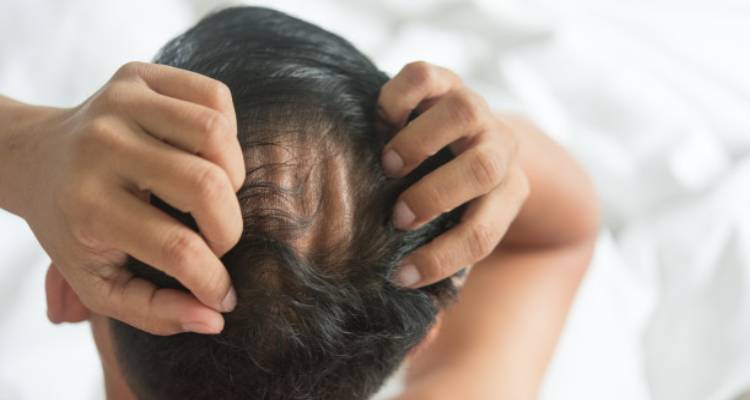
Various types of this disorder occur. Alopecia areata is most widespread in its dominant form, although other, rarer forms exist:
Alopecia areata universalis
Besides hair loss on the forehead, individuals with alopecia areata lose all hair — eyebrows, and cloves.
Other body hair, like chest, back, and pubic hair, may also be missing.
Alopecia areata patchy
The major aspect of this form of alopecia is one or more areas of skin or body hair loss. When this disease expands, it may become total or Universalis alopecia.
The Alopecia areata Diffuse
The Diffuse alopecia areata may aspect a lot of similar hair loss for women or men. It contributes to abrupt and unpredictable hair dilution through the scalp, not just in one region or patch.
The Ophiasis alopecia
Hair loss following a band on the sides and below the scalp is termed Ophiasis alopecia.
The Alopecia totalis
Alopecia totalis happens as the whole scalp gets a hair deficiency.
[READ Perfect hair health ]
The Alopecia areata in males
Alopecia areata in equal men and women, although hair loss is likely to be improved in men. Men are often more prone to have a history of hair loss.
Men can skill hair loss in their face, scalp, chest, & back hair. Compared with the male-pattern baldness, which is progressive hair thinning, hair loss triggers patchy hair loss all over the place.
Alopecia areata in women
Women are more likely than men to have alopecia areata, although it is not known why. There might be hair loss on the scalp and the eyebrows and pinches.
Alopecia areata can be limited to a specific region compared to women’s hair loss, which is a steady thinning of the hair that extends a wide area.
The hair loss may also arise at once. The region will slowly extend, contributing to increased hair loss.
Alopecia areata in kids
Children’s areata may develop alopecia. In reality, by 30 years of age, most people would undergo their first hair loss.
Since the alopecia areata has an inherited aspect, parents with the disorder do not often pass it on to an infant.
Children with hair loss of this sort might often not have a parent that has it. Besides hair loss, children may suffer from nail defects such as pitting or fractures.
This added symptom can also be encountered by adults, although it is more frequent in adolescents. According to the National Alopecia Areata Foundation, alopecia’s mental effect is generally not great for children younger than 5 years.
However, after 5 years of age, hair loss will traumatize small children when they notice how distinct they are from others.
[READ Top 10 Best Hair Growth Products for Men and Women’s ]
Causes of Alopecia areata
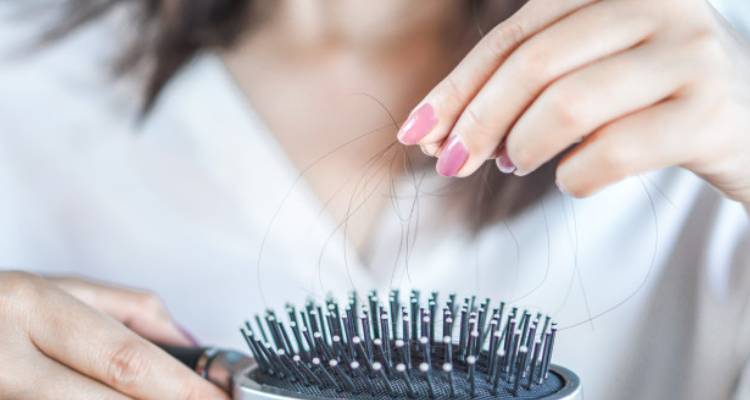
Alopecia areata is suspected to be a chronic autoimmune disease in which the body targets and inhibits or stops hair development in its own anagen follicles’ lymphocytes cluster.
For example, around the follicles that have been infected, triggers inflammation and resulting hair loss. Hair follicles, a condition called immune privilege, are believed to be kept away from the immune system.
A violation is considered to cause alopecia areata in this immune privilege state. Several reports of babies born with congenital alopecia areata were registered.
Alopecia areata is not contagious. It happens more commonly in persons with family relatives, indicating heredity could be a factor.
The analysis of families with two or more impaired members shows clear signs of a growing hereditary link to alopecia areata risk.
In comparison, alopecia areata shares hereditary risk factors with other autoimmune disorders, including rheumatoid arthritis, Type 1 diabetes, and celiac disease.
It may be the only manifestation of celiac disease. At least four genetically engineered areas have replicated it. The endogenous retinoid metabolic defect is a central component of alopecia in pathogenesis.
In 2012 a genome-wide analysis of 130 single nucleotide polymorphisms consistent with alopecia areata was published. The genes described include regulating and propagating regulatory T cells, the cytotoxic T antigen-associated lymphocyte 4, interleukin-2, interleukin-2 receptor A, and Eos, also.
Alopecia areata is suspected to be a chronic autoimmune disease in which the body targets and inhibits or stops hair development in its own anagen follicles.
T lymphocytes cluster, for example, around the follicles that have been infected, triggers inflammation and resulting hair loss. Hair follicles, a condition called immune privilege, are believed to be kept away from the immune system.
Damage is measured to cause alopecia areata in this immune privilege state. Several reports of babies born with congenital alopecia areata were recorded.
Alopecia areata is not contagious. It happens more commonly in persons with family relatives, indicating heredity could be a factor.
The analysis of families with two or more impaired members shows clear signs of a growing hereditary link to alopecia areata risk.
In judgment, alopecia areata parts hereditary risk reasons with other autoimmune illnesses, including rheumatoid arthritis, Type 1 diabetes, and celiac disorder.
It may be the only manifestation of celiac disease. At least four genetically engineered areas have replicated it.
Endogenous retinoids metabolic fault is a central factor of alopecia is pathogenesis.
named the Ikaros family zinc finger 4, and the human leukocyte antigen. The research also found two genes, PRDX5 and STX17, expressed in the hair follicle.
Signs and Symptoms of alopecia areata
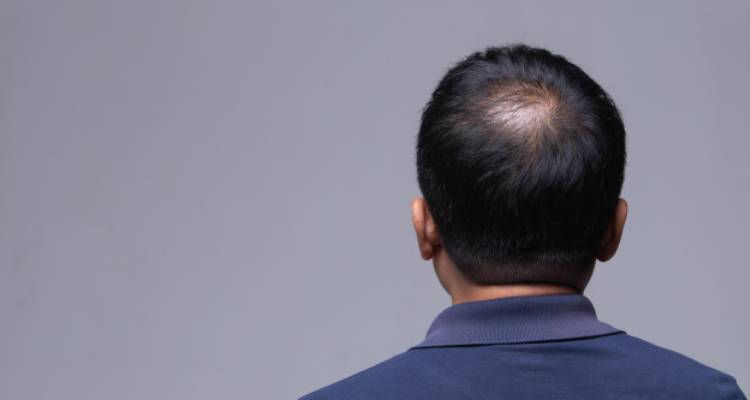
Hair loss is the major complication of alopecia areata. Hair typically comes out on the scalp in tiny patches. Sometimes these patches are few centimeters or fewer.
Hair loss may also occur in other aspects of the face, such as the ears, eyelashes, beards, and other body regions.
In a few places, certain people lose their hair. Others miss it in several places.
You will see hair clumps on your pillow or in the bathroom first. If your head is in the places, anyone will carry it to your notice.
However, some conditions of health may often contribute to hair dropping into a similar pattern. Hair deficiency itself is not used for alopecia areata diagnosis.
In rare instances, certain patients might have more hair loss. This is generally a symptom of some form of alopecia, for example.
- total alopecia, which is all hair deficiency on the scalp
- Alopecia Universalis is the whole body’s hair deficiency
Doctors should stop utilizing the words “total” and “universalist” since certain people can experience between the two.
You will lose all the hair on your head, legs, and scalp, but not on your chest, for example.
Hair loss correlated with alopecia areata is sporadic and tends to be a random trusted cause, as far as physicians and experts can say.
The hair will develop back and fall out again at all times. The degree of hair loss and regeneration differs significantly amongst individuals.
How is Alopecia areata Diagnosed?
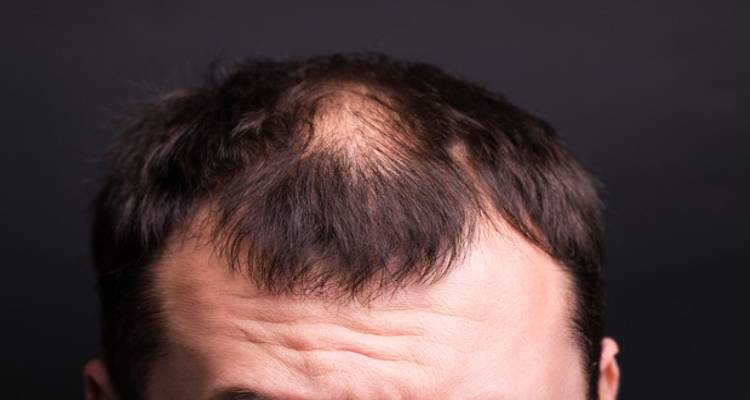
An alopecia areata may be identified by a specialist clearly assessing the hair loss’s degree and examining a few hair extracts under a microscope.
Your specialist will also conduct a scalp biopsy to exclude other hair loss conditions, including fungal infections such as tinea capitis.
Your doctor will take a tiny patch of skin on your scalp for examination during a scalp biopsy.
Blood testing may be conducted if reported other inflammatory disorders.
The exact blood examination administered relies on the specific disorder of the practitioner.
A specialist would typically search for one or two irregular antibodies. In your blood, these antibodies typically indicate you have an autoimmune disease.
[READ 7 MOST COMMON STAGES OF HAIR LOSS ]
Classification of Alopecia areata
Hair deficiency at one or two circular locations on the scalp is typically correlated with alopecia areata.
- Hair may also be further dispersed over the entire scalp, where the disorder is considered diffuse alopecia areata.
- In only singal position, Alopecia areata monolocularis describes baldness. It can happen anywhere in the brain.
- Alopecia areata multilocular is applied to many hair loss zones.
- Oasis is a hair deficiency on the circumference of the head, in the form of a motion.
- The condition may only be confined to the barb, which is called alopecia areata bar bae.
- If the person loses all the hair on the head, the disorder is called alopecia areata totalis.
- When all body hair, including pubic hair, is missing, the diagnosis becomes universal.
Treatment for Alopecia areata
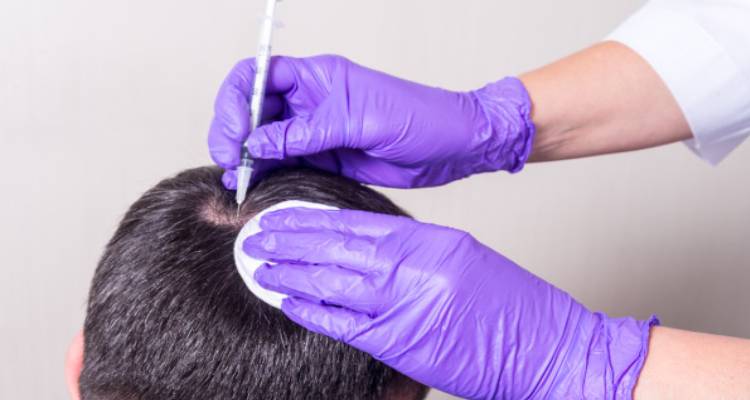
There is no proven solution for alopecia areata, although therapies may be sought to slow down potential hair loss or make hair grow faster.
The condition is difficult to foresee, so much testing and error can be needed before something works for you.
For certain cases, and with medication, hair loss can sometimes get worse.
The Medical Treatment
The Topical medications
Medicines should be rubbed on your scalp to promote hair growth. There are a variety of drugs available, both OTC and prescription:
- OTC is available in Minoxidil (Rogaine) and added to the scalp, ears, and beard twice every day. It’s reasonably secure, but the findings can take a year. It is only beneficial for patients with restricted alopecia areata.
- Anthralin is a treatment that irritates the skin to promote the regeneration of the scalp.
- Corticosteroid creams such as Clobetasol (Impoyz), foams, lotions, and ointments are expected to function by decreasing hair follicle inflammation.
- Topical immunotherapy is a procedure used to spark a rash with a chemical such as diphencyprone in the skin. The rash that looks like poison oak can induce new hair growth in six months, but you must begin to develop again.
[READ HAIR TRANSPLANT AFTER 10 YEARS | SIDE EFFECTS | BENEFITS ]
The Injections
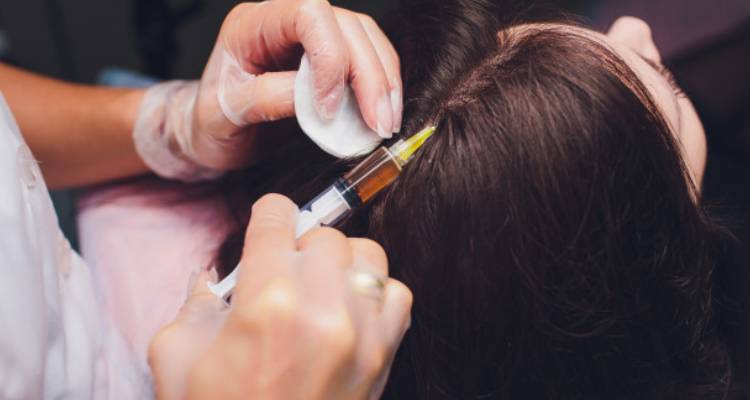
Steroid treatments are a popular choice to make the hair develop back on bald patches for slight patchy alopecia.
Small needles insert the steroid into the raw skin of the places involved.
The procedure should be performed after one or two months to replenish the hair. It does not avoid fresh hair loss.
The Oral counseling
Cortisone tablets are also used for extensive alopecia, although you can explore this alternative with your doctor because of its side effects.
Another choice you can consider is oral immunosuppressants such as methotrexate and cyclosporine.
They function by suppressing the immune system’s reaction. But the possibility of elevated blood pressure, liver and kidney losses, and an enhanced risk of severe infections and cancer called lymphoma are not useable for a long period.
Therapy for illumination
Photochemotherapy or phototherapy is also known as light therapy. It is a form of radiation therapy that utilizes an oral medicine named psoralens and UV light.
The Natural Treatment
Any patients with alopecia areata prefer different medications for the disorder. This may include:
- Aromatherapist
- A cultivation
- Sweetheart
- Proviso
- Laser therapy at a low degree
- Vitamins such as zinc and biotin
- Drinks with aloe Vera and topical gels
- Onion juice rubbed on the skirt
- Basic oils such as tea, rosemary, lavender, peppermint
- Some oils such as almond, beaver, olive, and jojoba
- “anti-inflammatory” diet, sometimes labeled an “autoimmune protocol,” which is a restrictive, meat-and-vegetable diet
- Massage of scalp
- Ginseng, green tea, Chinese hibiscus, and sap palmetto are herbal supplements.
In clinical studies, several natural treatments have not been studied because their efficacy remains uncertain in hair loss management.
Furthermore, the Food and Drug Administration would not need additional producers to show that their drugs are healthy.
The statements on the supplement labels are often erroneous or inaccurate. Speak to a specialist always before you attempt some herbal or vitamin supplement.
Every treatment’s efficacy ranges from individual to person. Other individuals may not require care because their hair develops alone.
In other situations, though, when pursuing all recovery methods, people won’t see much change.
Best Diet for Alopecia areata
Sugar drinks, packaged sweets, and alcohol may enhance the body’s inflammation and discomfort.
An “anti-inflammatory” diet may be regarded for certain patients with a diagnosed autoimmune disease.
This form of diet plan is intended to minimize the body’s inflammatory reaction and reduce the risk of a future hair loss event or hair loss.
For this reason, you consume foods considered to stimulate the inflammatory phase.
The basic foods in this diet are fruits and vegetables like blueberries, almonds, seeds, carrots, beets, and lean meats like wild salmon, also known as the autoimmune regimen.
A healthy diet, one of the whole grains, berries, plants, and lean meat, improves your general wellbeing, not only to minimize inflammation, for several purposes.
[READ SKIN BENEFITS OF DRINKING WATER, HAIR, AND HEALTH ]
Best Food For Alopecia areata
Prevention for Alopecia areata
It is not necessary to avoid alopecia areata because the origin is uncertain.
Many causes may trigger this autoimmune disease. These involve a part of the family, some autoimmune disorders, and many other conditions.
However, not all of these factors can establish the disease of the hair. This is why it is not yet feasible to avoid it.
To make a change, you can have to pursue more than one medication. Remember that hair replenishment may only be temporary.
The hair will grow back and then fall out again.
Research
Many drugs are under review. Some of these medicines are licensed for other disorders, although others are not available outside of trials.
Preliminary studies in 2015 indicate that oral ruxolitinib, a UK Food and Drug Administration (FDA) licensed drug for myelofibrosis in the bone marrow condition, preserved hair development in three long-standing and severely diseased persons.
The expense of medication is approximately US$12,000 a month.
READ THIS NEXT
What Happens If You Don’t Eat for a Week
Black Spot Inside Cheek & its causes
18 Amazing Dried Fruit Best for Weight Loss
10 Benefits of Drinking Milk At Night
Understand Hair Transplant After 10 Years
